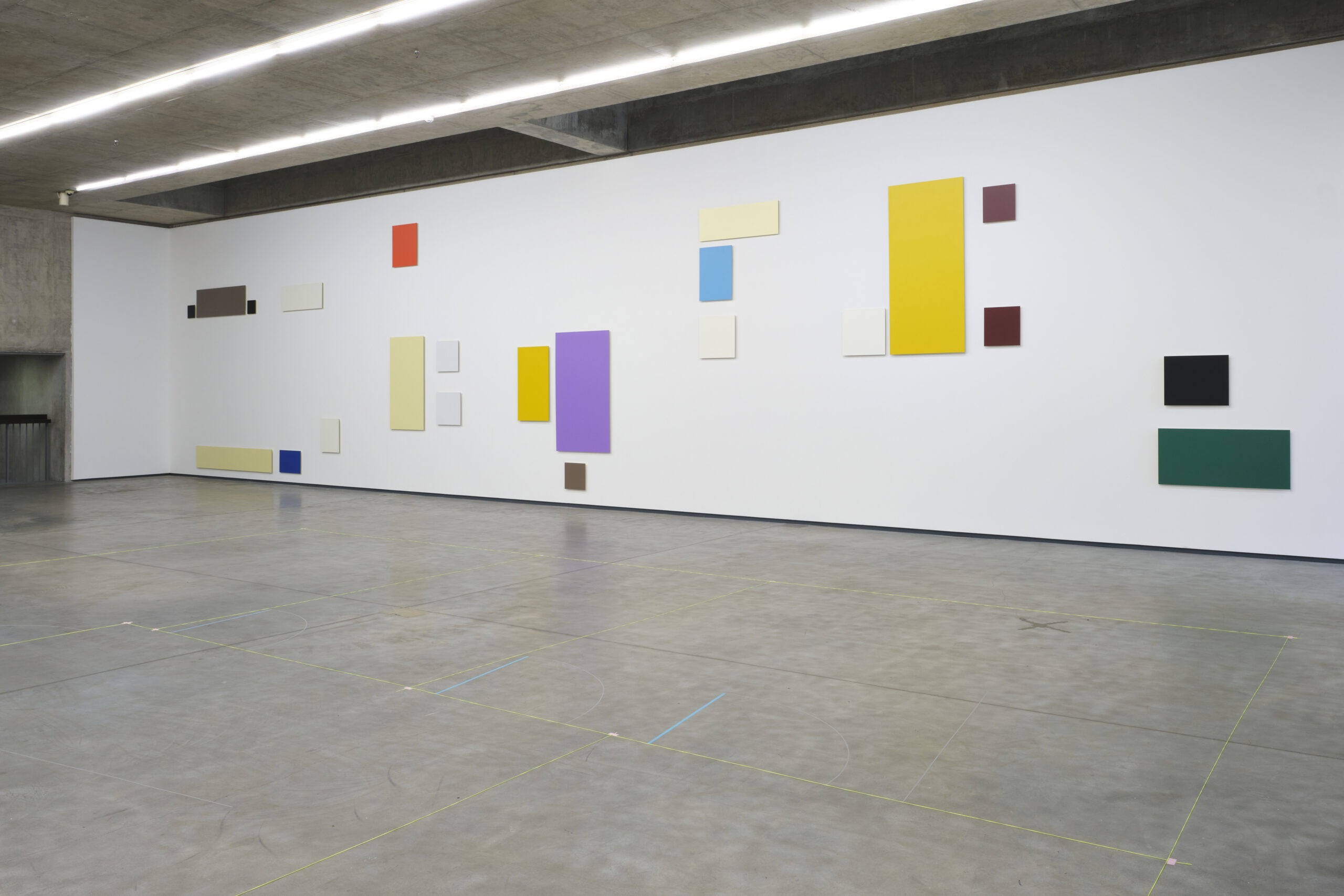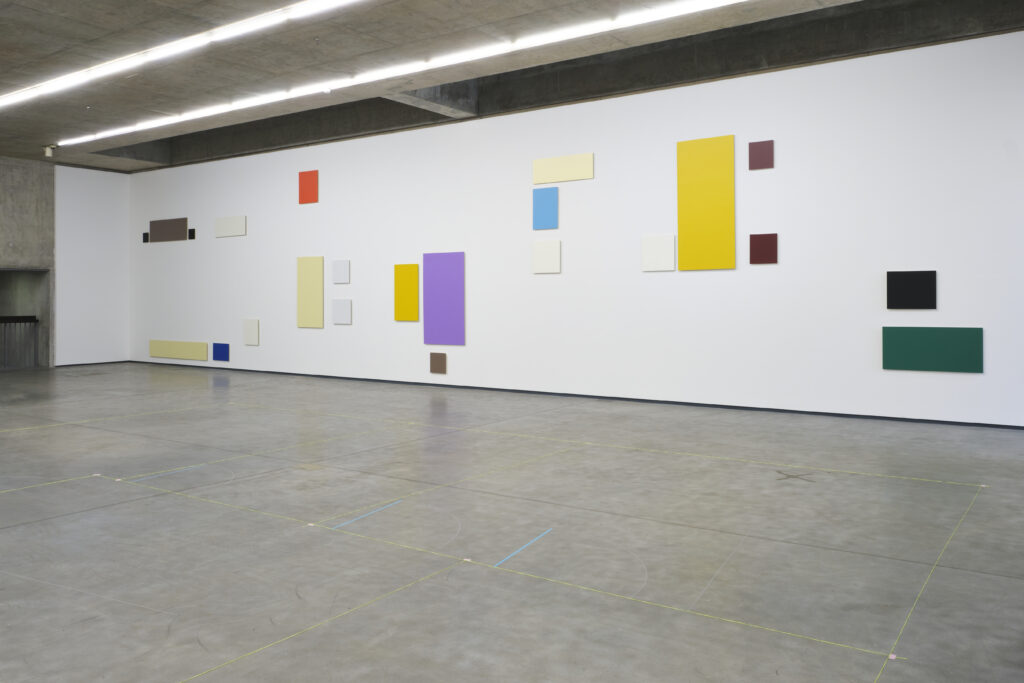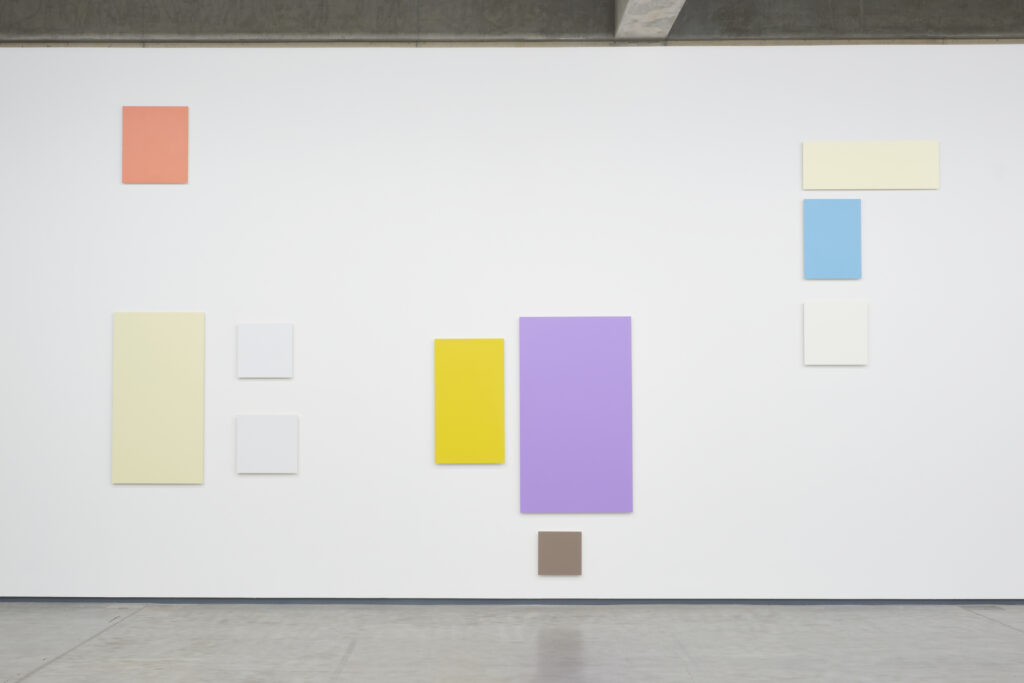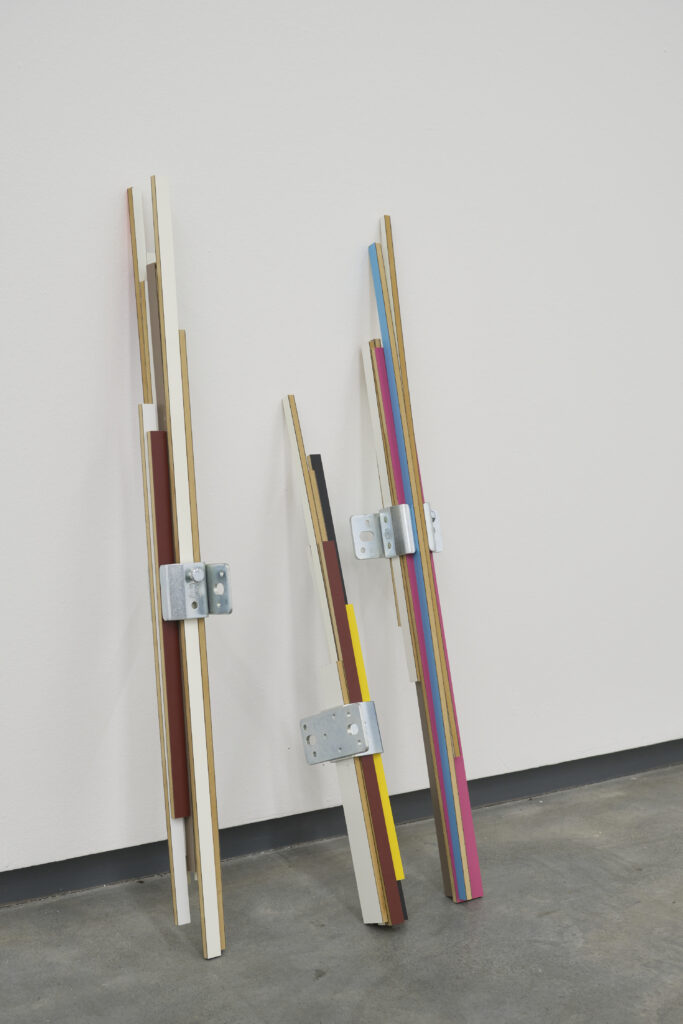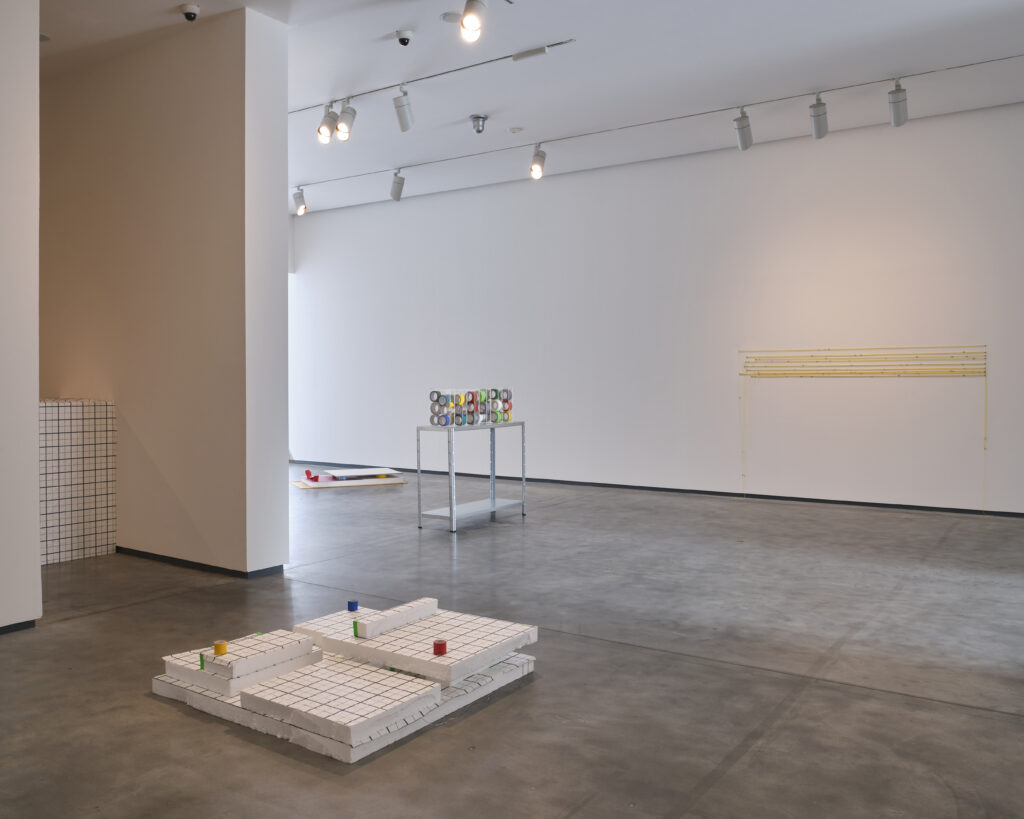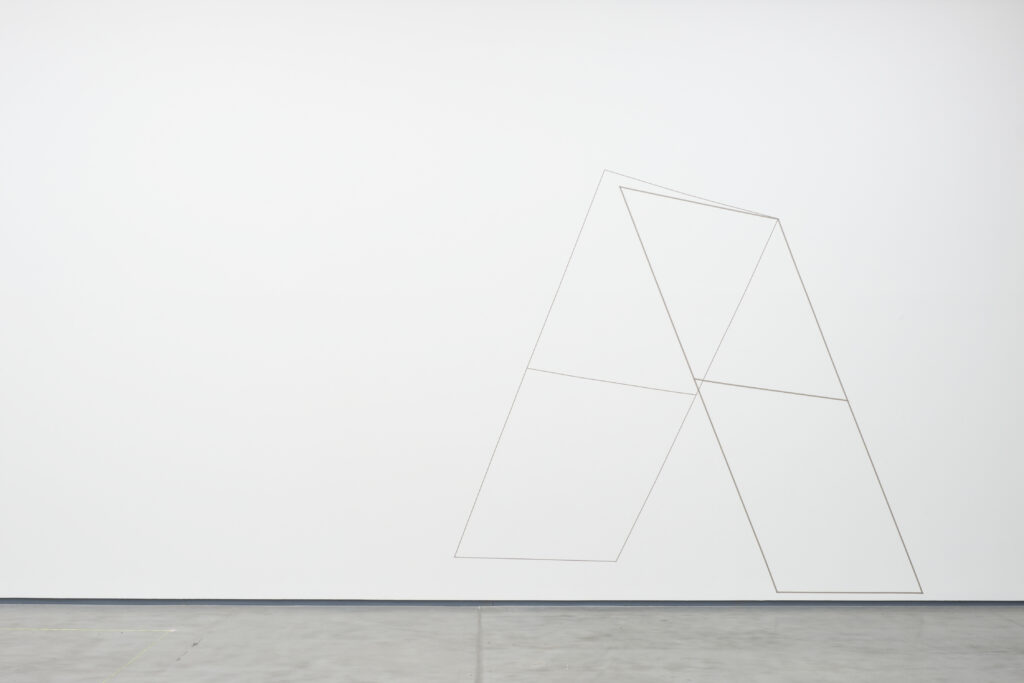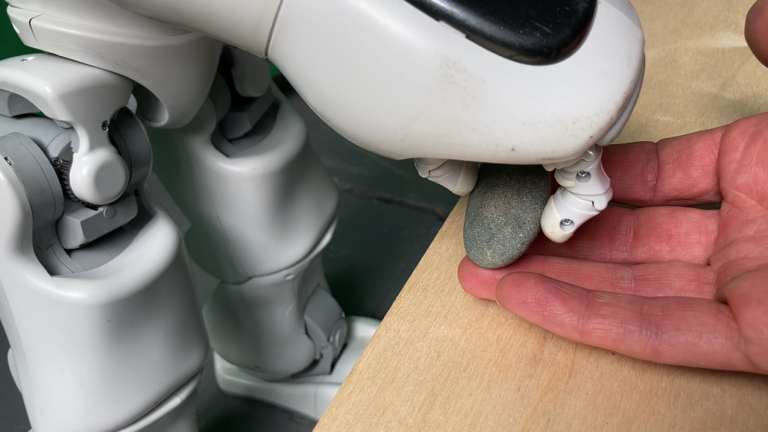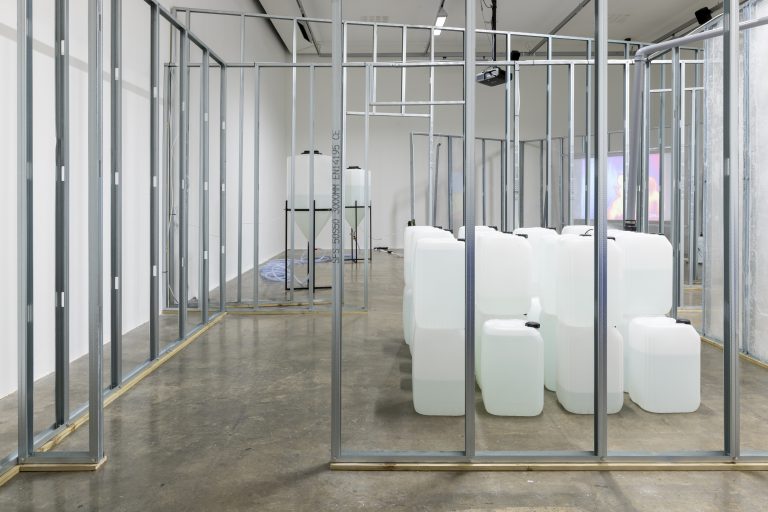Anne Tallentire’s art is beautiful; precise. It neither asks for nor requires redescription. Yet while these objects seem self-contained, they are not impenetrable or hermetic. Yes they might be possessed of a quiet and self-assured autonomy, but at no point do they completely withdraw into their own space. They run on parallel trajectories to their environments; nonetheless their rhythms and patterns are echoes of their surroundings. Their edges jut into our world.
Given this beautiful precision, I was tempted to refrain from describing the pieces in the exhibition because the work is so particular; sufficient. It feels like an injustice to reorganise things through a clumsy sequence of analogies, similes, or metaphors. When using metaphors it can sometimes feel like one is bullying objects or marshalling experiences into a chain of command. And language, as we know, is a form of infrastructure underwritten by often occluded power structures with their blind spots and prejudices. In this case the risk lies in imposing an alternative and uncalled-for hierarchy on matters, which is at odds with the existent internal logic of the work.
Take, for instance, Material Condition Part 1. This is an assemblage of layered and stacked wood and tarpaulin. As it is a near cube (100 × 120 × 100 cm), it presents itself as a self-contained sculptural form closed off to its surroundings. Part of the description Tallentire gives of the piece is that it is an expression of formal and structural concerns and that it can be ‘read both as a sculpture and three-dimensional drawing, each surface revealing a unique pattern relating to the process of making’.1 But despite the particularity of the form, the commonplace materials are far from unique and their familiarity invites recognition albeit one lacking in specificity. Tallentire is more explicit in stating that they invoke temporary emergency architecture, such as refugee camps, thus raising questions about state responses to humanitarian crises. Likewise, Setting Out 3 (2021) is made from yellow builders’ string with small paper-tape markers, mounted onto the wall with flathead screws to create a network of parallel lines that seem to refer only to themselves. The piece is also an indexical record of the plan of a characteristic Belfast terrace such as those found near the MAC with the markers corresponding to specific architectural details such as room sizes, windows, and doors.
These pieces, typical of Tallentire’s sculptural work, are at once both oblique and recognisable. They are instances of the patient and meticulous creation of intricate patterns and significant form. Yet these patterns and forms, while referring to very specific things in very specific ways, are in no way representations of those things either illusionistically or symbolically. That is, they don’t look like anything else, but neither are they metaphors for anything. Perhaps, then, a new word is helpful to grasp what might be going on here.
Humberto Maturana, the systems theorist, coined just such a new word: isophor. Isophors are neither representational or metaphorical; they are not imitative or symbolic. Instead they are the instances of basic or underlying patterns that may be present in different iterations, circumstances, or mediums. He explains:
The notion of metaphor invites understanding something by proposing an evocative image of a different process in a different domain (e.g., politics as war). With the metaphor you liberate the imagination of the listener by inviting him or her to go to a different domain and follow his or her emotioning. […] So, with an isophor you would not liberate the imagination of the listener but you would focus his or her attention on the configuration of processes or relations that you want to grasp.2
Isophors are not representative. They don’t symbolise anything or look like something else but are rather instances of the same patterns and relations appearing in different contexts. Metaphor (and its sibling, simile) tries to understand one thing in terms of another, proposing that ‘wind moves like a cripple among the leaves’; that love is a battlefield; that architecture is cars, clothes, or carpets.3 To identify isophors, on the other hand, is to find matching rhythms. To do so draws attention to the specifics of an abstraction while, simultaneously, bracketing out that pattern from all the other supporting context. Isophors seek out forms of correspondence that are not regulated by linguistic systems of communication and control. They are a different type of poetry.
Morning Lane (2016) gives an example of this. It is a single-channel video (4 minutes, 26 seconds long) of a fixed camera view on a building site in London. In the absence of all but the most generic identifying characteristics and any narrative arc, the primary content of the film appears as the arrangements made by the infrastructure of the building work. Within the provisional and incomplete construction, patterns emerge. These configurations are isophors that will be found repeated at different times in different places. As Tallentire acknowledges, the effect of the particular filmic framing of this one little bit of the world is that ‘the building site is temporarily dislocated, the materiality of the fabric of construction left hovering until a bus or other marker of life and scale snaps it back into its frame of reference’.4
The snapping referred to here is the snap between figure and ground. The dislocation is one in which the figure of isomorphic pattern becomes briefly isolated from its ground: the everydayness currently holding it. In doing this, Tallentire is calmly presenting something she thinks should interest us and stating: here is something to be looked at; here is something you will find both here and elsewhere. It is an injunction not only to look at her art, but to look away from it, too, and attend more carefully to our surroundings.
Anne Tallentire, Area, 2021
Twenty-eight laminated MDF panels, dimensions variable
Photo: Simon Mills
Anne Tallentire, Area, 2021
Twenty-eight laminated MDF panels, dimensions variable
Photo: Simon Mills
Anne Tallentire, Grasp, 2018
Off-cuts from decorative laminated panels, 74 × 38cm
Photo: Simon Mills
The surroundings that Tallentire consistently attends to are those that are most directly related to lived experience and habitation. This is most evident in Groundwork (2021, builders’ string, masking tape, builders’ tape, 766 × 1054 cm). This is a drawing in string held down by tape on the floor. It is an outline, in 1:1 scale, of a two-bedroom apartment. Unlike a detailed plan, this is something that we might walk around and into rather than just look at. In addition to considering living conditions, Groundwork is also typical in that Tallentire often speaks about her work in both two and three dimensions as relating back to drawing. This might be owing to the manner in which she is often concerned with the tracing of lines. These lines do two things. On the one hand they establish figure/ground relationships. And on the other, they create boundaries; that is, insides and outsides. In other words, lines begin to demarcate spaces that might be either dwelt within or, conversely, exclude occupation.
The central theme running throughout all of this is an attention to the fact that our experience is profoundly and unavoidably shaped by our environments. In phenomenological terms we not only inhabit a Lebenswelt (or lifeworld) of lived and shared experience but we are also constituted by it. Our minds do not end at the edges of our bodies; and the skin is not a boundary to consciousness but rather a malleable and porous interface with our surroundings. We are part of the systems around us and extend into them via our senses, limbs, and technologies. Architecture, like metaphor, creates hierarchies and our identities are constituted through our relationships with these hierarchies. Realising this means realising that infrastructure is not impartial. Or, to paraphrase that great Craig Owens quote about representation: infrastructure is not – nor can it be – neutral; infrastructure is an act – indeed the founding act – of power in our culture.5
Tallentire’s work might seem, at least initially, modest, quiet and self-contained. To describe it as such, however, would be to overlook the tenacity of the challenge it begins to present to a status quo underwritten by infrastructure. First, this is done through pointing, while holding an unwavering gaze, at its often overlooked structures and effects such as in the wall drawing Fence (2021), a diagrammatic reference to an upturned fence in Belfast. Second, it alludes to those objects, spaces, or identities that these structures might efface, such as can be seen in the series Plan (2020). These are framed photocopies of floor plans of 1970s housing developments with parts obscured by coloured rectangular blocks leaving only some details visible, such as the odd word like ‘void’. Third, it questions the authority of infrastructure by refusing to accept its fixity; through queering it perhaps.
But this material… is the first major institutional exhibition of Tallentire’s practice since This, and Other Things 1999–2010 (Irish Museum of Modern Art, 2010). Unlike that retrospective, this show brings together key work Tallentire has made since 2010 alongside pieces that have been re-staged in the context of the MAC. The stated curatorial aim is to bring this work, which is absolutely indicative of her practice in general, into dialogue with debates about the role and responsibilities that states might have in providing adequate social housing. Consequently, it is accompanied by a programme of talks and workshops and other activities developed in partnership with PPR (Participation, Practice, and Rights) a group documenting and representing the ‘lived experience’ of people in Belfast.
But this material…, 2021
Various works in the Tall Gallery
Photo: Simon Mills
Anne Tallentire, Fence, 2021
Wall drawing, masking tape, 384 × 234 cm
Photo: Simon Mills
Tallentire doesn’t document or represent per se, so the relationship between her work and its sociopolitical address to contemporary living conditions is more oblique. This is best demonstrated in a piece such as House (2016/18). This was devised in the run-up to a solo show in Grazer Kunstverein (Austria, 2018) and responds to a housing estate called Grünanger (2006) in Graz Liebenau designed by Hubert Rieß along ecological principles for lower-income residents. The sculpture comprises six transparent boxes sat on an ordinary-looking grey metal shelving unit. Inside the boxes there are rolls of brightly coloured tape of different colour, length, and size. I doubt that a cold reading of the piece would get much further than an appreciation of how commonplace materials have been expertly repurposed to create a delicate yet robust interplay of colour and pattern. However, each roll corresponds directly to the particular dimensions of rooms in the estate.
In her own version of site-specificity, Tallentire proposes something more subtle, yet no less effective, than a literal or metaphorical representation of pressing social issues relating to accommodation. This is done by employing isophors in attending to a phenomenology of infrastructure and its role in the construction and maintenance of experience. Tallentire demonstrates, with a quiet and persistent intensity, that to interrogate and describe the structure, edges, and effects of that infrastructure is, ultimately, an ethical act.
Notes
1 See https://annetallentire.info/works/material-condition-part-1/.
2 Cited in Ray Ison, Systems Practice: How to Act (London: Springer 2010), 61.
3 Wallace Stevens, ‘The Motive for Metaphor’ in The Collected Poems (New York: Faber & Faber, 1954), 288 ff.; Pat Benatar, ‘Love is a Battlefield’, song written by Mike Chapman and Holly Knight; Adrian Forty, ‘Of Cars, Clothes and Carpets: Design Metaphors in Architectural Thought: The First Banham Memorial Lecture’, Journal of Design History 2, no. 1 (Oxford University Press, 1989): 1–14.
4 See https://annetallentire.info/works/morning-lane/.
5 The original quote is ‘Representation, then, is not – nor can it be – neutral; it is an act – indeed the founding act – of power in our culture.; Craig Owens, Beyond Recognition: Representation, Power, and Culture, ed. Scott Bryson et al. (Berkeley: University of California Press, 1994), 91.
Francis Halsall is a lecturer in Visual Culture and (co) Director of the Masters Programs: Art in the Contemporary World at NCAD, Dublin.
This review was originally published in PVA 13.

